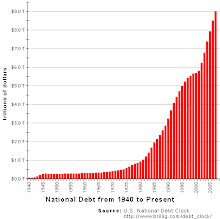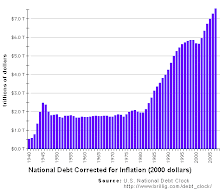Monday, June 9, 2008
Characteristics of Investments
When making decisions about personal investments, one should consider four characteristics:
1. Rate of Return
2. Risk
3. Liquidity
4. Tax Breaks
The rate of return is the payment an investor earns from engaging in an investment activity. It is sometimes referred to as the interest rate. For example, if an investor earns interest on deposits in a savings account at a bank, the interest earned is the rate of return. The nominal rate of return is the stated rate of return of an investment. Investors should care more about the real rate of return, however. The real rate of return is the nominal rate of return adjusted for inflation.
Real Rate of Return = Nominal Rate of Return - Inflation Rate
Nominal Rate of Return = Real Rate of Return + Inflation Rate
Inflation Rate = Nominal Rate of Return - Real Rate of Return
Suppose a savings account pays the depositor 8 percent interest per year, but the inflation rate is 3 percent per year. The nominal rate of return is 8 percent per year, but the real rate of return is only 5 percent per year.
Risk refers to the relative likelihood that an investment will lose value. Investments with greater risk generally offer the potential for a greater rate of return. There are two types of risk one should consider when choosing personal investments. Bankruptcy risk is the relative likelihood that the firm or institution in which you invest goes bankrupt and does not pay you the return they promised you. Market risk is the relative likelihood that your investment will lose value because of fluctuations in the economy.
Shares of stock of large, well-established corporations, such as General Motors or Sears, have much less bankruptcy risk than new or relatively unknown companies. All stocks are subject to market risk, however. The value of a stock tends to rise when potential investors are optimistic about the company’s earnings in the future. Similarly, a stock price tends to fall when investors are pessimistic about the company’s upcoming profits. Uncertainty about the economy, such as the effects of a war, can cause stock prices to remain steady or fall. When the uncertainty is removed, stock prices are more likely to rise.
When the economy performs well, as indicated by positive economic growth, low inflation, and low unemployment, then the stocks of most corporations tend to rise. When the economy grows slowly or shrinks and suffers from high inflation or high unemployment, however, then most stock prices fall.
Liquidity refers to how quickly an investment can be converted into money. Investments with less liquidity generally offer a higher rate of return than investments that can be easily converted into cash. For example, if you purchase a 12-month certificate of deposit (CD) from a bank, you will usually receive a higher rate of return than the interest rate offered on regular savings accounts. By purchasing a 12-month bank CD, you are promising the bank you will not withdraw your money for the next year. Since the bank knows you will not be withdrawing your money, they can loan the entire amount to other customers. To compensate you for sacrificing liquidity, banks usually pay a higher interest rate on certificates of deposit than on savings accounts.
Tax breaks are the benefits some investments provide in the form of reduced tax liability. For example, when state and local governments borrow money by selling municipal bonds, the interest on those investments is frequently exempt from state income taxes.
1. Rate of Return
2. Risk
3. Liquidity
4. Tax Breaks
The rate of return is the payment an investor earns from engaging in an investment activity. It is sometimes referred to as the interest rate. For example, if an investor earns interest on deposits in a savings account at a bank, the interest earned is the rate of return. The nominal rate of return is the stated rate of return of an investment. Investors should care more about the real rate of return, however. The real rate of return is the nominal rate of return adjusted for inflation.
Real Rate of Return = Nominal Rate of Return - Inflation Rate
Nominal Rate of Return = Real Rate of Return + Inflation Rate
Inflation Rate = Nominal Rate of Return - Real Rate of Return
Suppose a savings account pays the depositor 8 percent interest per year, but the inflation rate is 3 percent per year. The nominal rate of return is 8 percent per year, but the real rate of return is only 5 percent per year.
Risk refers to the relative likelihood that an investment will lose value. Investments with greater risk generally offer the potential for a greater rate of return. There are two types of risk one should consider when choosing personal investments. Bankruptcy risk is the relative likelihood that the firm or institution in which you invest goes bankrupt and does not pay you the return they promised you. Market risk is the relative likelihood that your investment will lose value because of fluctuations in the economy.
Shares of stock of large, well-established corporations, such as General Motors or Sears, have much less bankruptcy risk than new or relatively unknown companies. All stocks are subject to market risk, however. The value of a stock tends to rise when potential investors are optimistic about the company’s earnings in the future. Similarly, a stock price tends to fall when investors are pessimistic about the company’s upcoming profits. Uncertainty about the economy, such as the effects of a war, can cause stock prices to remain steady or fall. When the uncertainty is removed, stock prices are more likely to rise.
When the economy performs well, as indicated by positive economic growth, low inflation, and low unemployment, then the stocks of most corporations tend to rise. When the economy grows slowly or shrinks and suffers from high inflation or high unemployment, however, then most stock prices fall.
Liquidity refers to how quickly an investment can be converted into money. Investments with less liquidity generally offer a higher rate of return than investments that can be easily converted into cash. For example, if you purchase a 12-month certificate of deposit (CD) from a bank, you will usually receive a higher rate of return than the interest rate offered on regular savings accounts. By purchasing a 12-month bank CD, you are promising the bank you will not withdraw your money for the next year. Since the bank knows you will not be withdrawing your money, they can loan the entire amount to other customers. To compensate you for sacrificing liquidity, banks usually pay a higher interest rate on certificates of deposit than on savings accounts.
Tax breaks are the benefits some investments provide in the form of reduced tax liability. For example, when state and local governments borrow money by selling municipal bonds, the interest on those investments is frequently exempt from state income taxes.
Subscribe to:
Post Comments (Atom)






These statistics are so evident. We cannot change the problem of aging people. It’s true that we have many elderly people. They spend most of their funds on health. Some of them need an expensive care. For example, my elderly neighbors asked to find 24 hour payday loan near me. They want to go and check everything thoroughly. But this is not only the case. Even students who pay for their tuition are faced with the money problem. They need money to buy books and other studying materials.
ReplyDelete